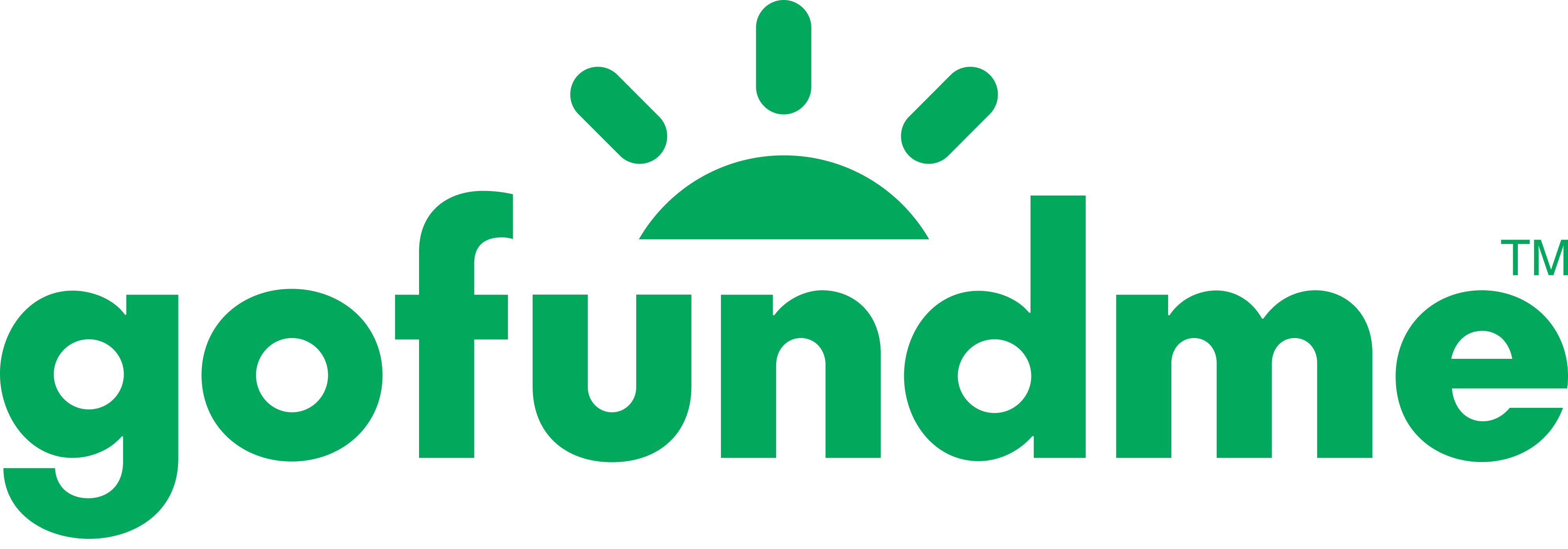So you’ve decided that crowdfunding is right for you. Great! But how do you know which crowdfunding platform is right for your needs? Whether you’re raising money for a financial emergency, a business idea, a creative project, a personal dream, or even to help a friend in need, you’ll want to consider these five factors in choosing the right fundraising platform:
- Type of crowdfunding model
- Features and performance
- Trust and fraud protection
- Customer support
- Fees
1. 3 types of crowdfunding models explained
Not all online fundraising sites are built to support the same things, so first you’ll want to understand the type of fundraising you’re looking to do before.
Personal fundraising
If you’re an individual raising funds for a neighbor, friend, family, or organization, you’ll be better off choosing a platform that focuses on personal fundraising. They’re quick to set up, include the basic sharing features you need, and allow you to start collecting donations right away. Examples include GoFundMe and HoneyFund. Many of these platforms allow individuals to raise funds for a nonprofit, too, with the money being sent directly to the charity of your choice.
Business or creative project crowdfunding
If you’re looking to launch a product or start a creative endeavor, consider a project-based fundraising site like Indiegogo or Kickstarter. These platforms offer a more professional feel as well as many marketing opportunities to expand your reach.
Indiegogo specializes in technology and hardware product launches. Indiegogo’s audience skews more toward tech early adopters, so if you’re launching an innovative product, Indiegogo could be an ideal place to fundraise. Another benefit of Indiegogo is their team of marketing strategists who help expand your reach during your campaign.
Kickstarter is geared toward creative projects. If you’re a musician, artist, or filmmaker, Kickstarter could be a good option.
Nonprofit fundraising
If you’re a charitable organization, you know how hard it is to find nonprofit funding sources. Online fundraising is becoming more common for nonprofits as an additional way to raise funding. There are a few options:
Encourage supporters to start fundraisers for your nonprofit
You can encourage long-time volunteers and other supporters to start a fundraiser on a personal fundraising site. They can rally friends and family to raise funds that go directly to your organization. Functionality will be limited, but the tradeoff is that it’s quick and easy to get set up. Plus, it’s a great way to get your community involved.
Start a fundraiser for your nonprofit
If you’re looking for more robust functionality, consider sites like CrowdRise or Classy. They offer features that make nonprofit fundraising easier, like incorporating event registration into your fundraiser or integrating with your nonprofit’s CRM software. You can usually try out a free version of the product before committing to a paid subscription for a more advanced set of features.
2. Features and performance
Each platform offers unique features that help their organizers be successful. Below we’ve mentioned some of the most notable features you should look for.
Support for adding a beneficiary
Running a fundraiser for someone else should be relatively easy as long as you’re aware of the platform’s beneficiary features. Platforms like JustGiving require you to add your beneficiary’s bank account information in for them, so be sure they’re comfortable giving you their personal bank account information before signing up. On the other hand, GoFundMe lets the beneficiary set up a separate but linked account where they can securely enter their own information to withdraw the funds. If you’re raising funds for a nonprofit organization, you should confirm that the charity is already in the platform’s system so they can easily receive the funds to their bank account.
How fast can you cccess your donations?
Personal fundraising platforms
Personal fundraising sites like GoFundMe and HoneyFund typically send the funds within 2-5 business days, which is the fastest of all crowdfunding sites. Other major crowdfunding platforms can take longer, usually depending on the payment processor used.
Project-based crowdfunding sites
Sites like Indiegogo and Kickstarter have longer timeframes, and Kickstarter requires you to reach your goal to withdraw the funds. Indiegogo sends the funds 15 business days after your fundraiser ends, while Kickstarter sends the funds 14 days after your goal is reached.
Nonprofit fundraising platforms
There are usually a bit more restrictions when it comes to nonprofit fundraising sites. Often if your organization is enrolled in GuideStar then you can receive faster payouts by a direct deposit. If you aren’t enrolled then it may take longer to receive funds. Make sure to double-check the nonprofit fundraising site’s fund retrieval options before picking a platform.
Will you need a mobile app?
While most crowdfunding sites have a mobile site, using a mobile app to manage your fundraiser will provide the best “on the go” experience. Kickstarter, Indiegogo, and GoFundMe have highly rated apps in the Google Play and Apple App Store. GoFundMe recently came out with a unified app experience where donors can browse through fundraisers to donate, and organizers and beneficiaries can easily manage their account(s). Kickstarter’s app is perfect for browsing through other successful projects to spark your own creative thinking, and you can easily become a backer for the next cutting-edge project.
3. Trust and fraud protection
With any online site, it’s important that they have the security features to ensure both you and your donors feel comfortable trusting them with your financial information. Make sure you feel comfortable with the crowdfunding platform’s safety features.
Level of PCI compliance
All crowdfunding websites are required to use encrypted Secure Socket Layer (SSL) technology to process payments, which is the same technology that banks use. Since the industry requires this, listing it publicly doesn’t necessarily make a site more secure, since it’s required. A true differentiator is what level of PCI compliance a site has, if any. Only Facebook and GoFundMe have the highest level of PCI compliance, while others like Fundly don’t process enough payments to be Level 1.
The platform’s Better Business Bureau (BBB) rating
If the company has an A+ BBB review and publicly responds to customers’ complaints, they truly value their customer experience. If the company has an A+ review but doesn’t reply to users’ public complaints, it raises the question of where else they might be lacking in customer support.
Trust and Safety
If you can easily report a fundraiser, that’s a good sign. All reputable sites should have the option to report a fraudulent fundraiser to ensure the site’s security. Kickstarter and GoFundMe have easy ways to report potentially fraudulent fundraisers and publicly mention their Trust & Safety Teams. GoFundMe goes above and beyond with their GoFundMe Giving Guarantee, which is insurance for crowdfunding that you don’t have to pay for.
4. Customer support
In a perfect customer support scenario, you won’t need to contact support at all. However, this is rare. Because you’ll likely contact support at least once, we outlined the top platforms for you so that you can get a better idea of what to expect.
GoFundMe
- Email support offered
- Help Center and blog for tips
Indiegogo
- Provides 24/7 email support
- Help Center and Education Center
Fundly
- Email support option
- Help Center
- Nonprofits can purchase phone support
CrowdRise
- Email support available 7 days a week
- Help Center and Study Hall for tips
- Personalize training for fundraising success
- Email support for Facebook users
- Facebook Help Center (not dedicated to fundraising)
5. Understanding platform fees versus payment processor fees
Though crowdfunding platforms have made fundraising easier than ever, they do come at a cost. Most platforms take a percentage of the funds you receive called a platform fee and others have additional upfront costs. But some offer a 0% platform fee where donors can leave optional tips. All sites have mandatory payment processing fees. It’s very important to understand the entire fee structure before you start sharing your fundraiser and receiving donations.
Platform fees
A platform fee is when a crowdfunding site deducts a percentage of your donations to use their platform. Common platform fees range from 3% to 5%. Some platforms take up to 30% but luckily for a few, like GoFundMe, it costs nothing to start a fundraiser. Instead, they allow donors to tip for their services.
Payment processing fees
These fees are unavoidable. Payment processors like WePay and PayPal deduct a fee for their services. So when you donate money online, payment processors collect a small fee for each transaction.
Donor tips
GoFundMe offers a fundraising platform where donors leave tips to cover platform fees. All fundraising websites require payment processing fees, which cannot be covered by the donor’s tip. Read more about GoFundMe’s fees.
Upfront costs
Premium fundraising websites like Classy, CrowdRise Premium, and HoneyFund Elite all charge a subscription in addition to the platform and payment processing fees. Though the fees might be higher, they offer additional features to make the cost worth it. Some websites offer lower platform fees to offset the upfront cost.
Pick the best crowdfunding platform for your goals
With so many incredible online fundraising platform options, it’s rare that you’ll pick a bad platform. However, we hope that this list helps teach you how to choose a crowdfunding platform. Whether it be for a creative project, a surprise birthday party, or the best honeymoon you could ever ask for, crowdfunding is the fastest and easiest way to receive funds from your family, friends, and online community.

